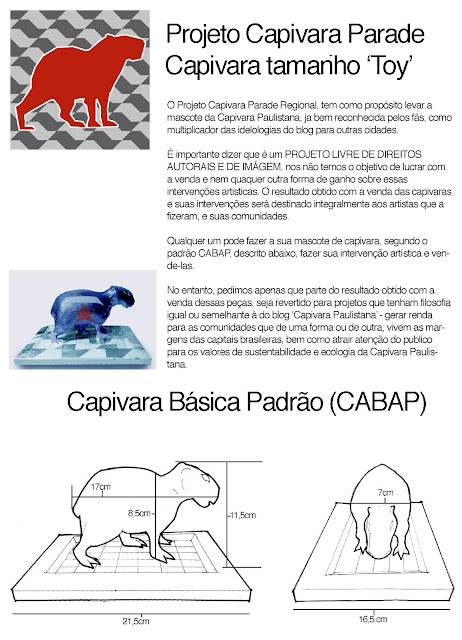According to Luiz Pagano, creator of 'Capybara Parade' movement, the public mobilization leading to decontamination of rivers in other cities of the world, such as the River Thames in London and the Han River in South Korea, has not happened in Brazil, 'Capybara Parade' was created in 2008, with the purpose of calling public attention to the indifference that public administrators have with Brazilian waters.
After the incident in which a dam holding back water from an iron ore burst near Mariana, in the state of Minas Gerais, and a few months left to the opening of Olympics, with the waters of the bay of Guanabara completely filthy, Brazilian authorities really shows the total ineptitude with regard to the basic care that the rivers and lakes of almost every Brazilian cities should have.
And it is in this scenario that the capybara surges as a hero. The world's largest rodent that lives in the Brazilian forests boldly appears swimming in rivers highly polluted cities of São Paulo and Rio de Janeiro and walking in groups along its banks.
“The Capybara is an ambassador of nature, dare to arrive in the cities and to swim in the rivers and lakes that we degrade, they seem to show us as a protest, that the rivers of our cities are no latrines, but spaces for living and beauty” says Luiz Pagano.
The exhibition at Palladium Mall in Curitiba, which began on May 23, goes up to June 5. On 4 and 5 June, the children who pass through the mall can paint mini plaster capybaras. "The intention of the Palladium is to aware the children about the preservation of nature, as well as providing a playful experience of painting," adds marketing manager.
 |
| Concept artist Luiz Pagano at the opening of 'Capi Parade', promoted by Palladium Mall - the animal is also symbol of the city of Curitiba, one of the most sustainable city in Brazil |
To celebrate the World Environment Day, from 6 to 12 June. the ‘Capi Parade’ leaves in flock to the itinerant exhibition in various touristic sights of Curitiba, at the end of the action, the pieces will be donated and auctioned by the auctioneer Helcio Kronberg. The value fetched from the auction, the auctioneer's commission and the work of artists are donations and will be reversed in blankets to the campaign 'Donate Heat', of Curitiba performed by the Pro-Citizenship Institute and the Social Action Foundation ( FAS).
The event also includes the participations Brazilian celebrities, the 'Capybara Bi-articulated' had artistic intervention of architect and urban planner Jaime Lerner, in reference to the bus created by him, another wears a jersey of Brazilian soccer selection that will be autographed by Pelé, the king of football, after the auction, with a dedication to the winning bidder.







